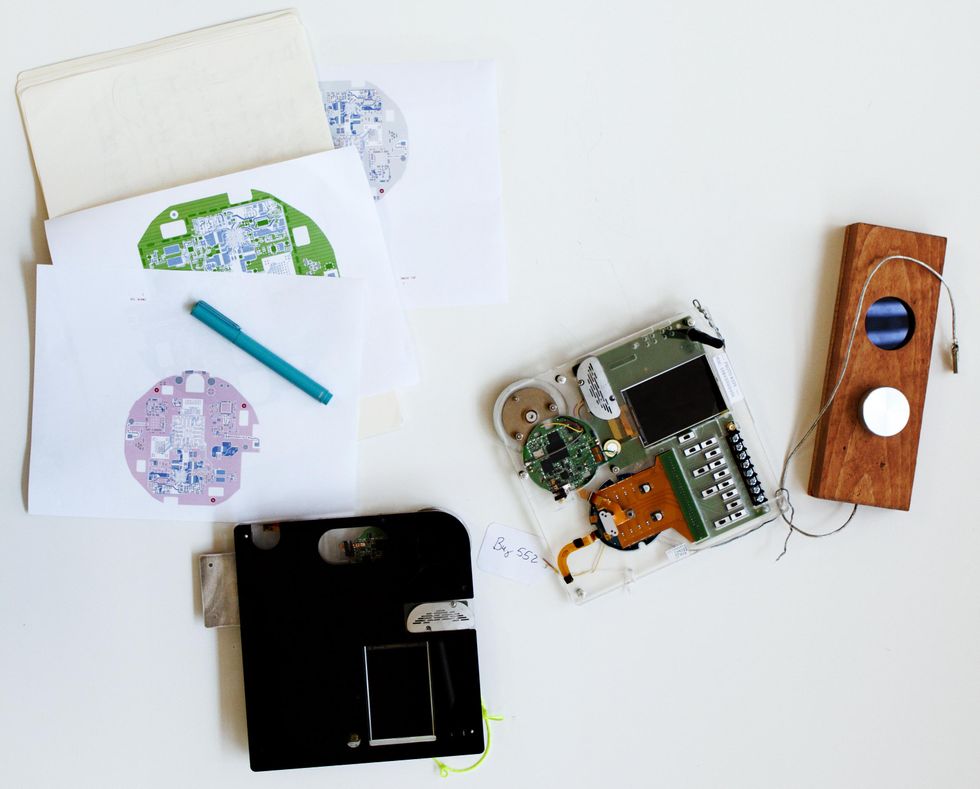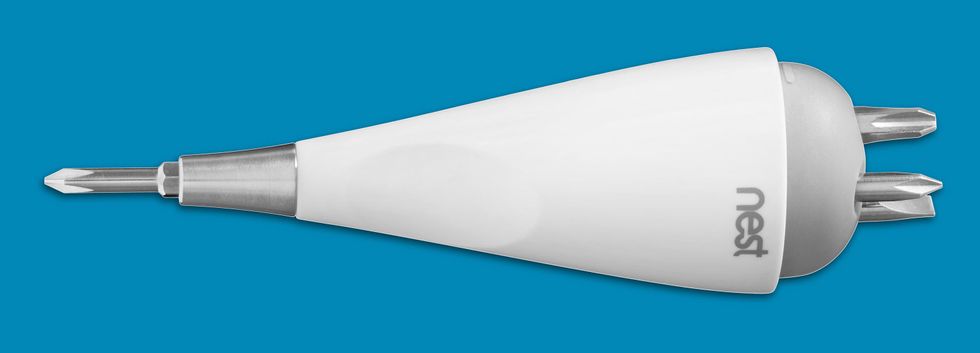[ad_1]
For most of the 10 several years that I idly believed about thermostats, I had no intention of setting up a single. It was the early 2000s, and I was at Apple producing the initial Apple iphone. I bought married, had little ones. I was active.
But then once more, I was also really chilly. Bone-chillingly chilly.
Just about every time my wife and I drove up to our Lake Tahoe ski cabin on Friday nights just after do the job, we’d have to keep our snow jackets on until the subsequent working day. The house took all evening to warmth up.
Strolling into that frigid household drove me nuts. It was intellect-boggling that there wasn’t a way to warm it up in advance of we acquired there. I put in dozens of hours and 1000’s of dollars attempting to hack safety and laptop gear tied to an analog mobile phone so I could hearth up the thermostat remotely. Fifty percent my vacations had been spent elbow-deep in wiring, electronics littering the flooring. But very little worked. So the initial night time of just about every vacation was constantly the very same: We’d huddle on the ice block of a bed, below the freezing sheets, viewing our breath switch into fog right until the household lastly warmed up by morning.
Then on Monday I’d go back to Apple and work on the 1st Iphone. Ultimately I realized I was earning a excellent distant control for a thermostat. If I could just hook up the HVAC method to my Iphone, I could control it from everywhere. But the know-how that I required to make it happen—reliable very low-charge communications, low-cost screens and processors—didn’t exist still.
How did these unattractive, piece-of-crap thermostats charge nearly as a lot as Apple’s most cutting-edge technologies?
A year afterwards we made a decision to develop a new, superefficient household in Tahoe. For the duration of the working day I’d do the job on the Apple iphone, then I’d arrive dwelling and pore above specs for our dwelling, picking finishes and products and solar panels and, sooner or later, tackling the HVAC method. And when all over again, the thermostat came to haunt me. All the prime-of-the-line thermostats were hideous beige packing containers with bizarrely confusing consumer interfaces. None of them saved energy. None could be managed remotely. And they charge around US $400. The Apple iphone, in the meantime, was selling for $499.
How did these unattractive, piece-of-crap thermostats price almost as a great deal as Apple’s most reducing-edge engineering?
The architects and engineers on the Tahoe challenge listened to me complaining in excess of and about about how insane it was. I informed them, “One working day, I’m going to resolve this—mark my text!” They all rolled their eyes—there goes Tony complaining once more!
At to start with they ended up just idle words born of irritation. But then items began to improve. The good results of the Apple iphone drove down charges for the advanced factors I couldn’t get my arms on before. All of a sudden substantial-high quality connectors and screens and processors ended up remaining manufactured by the millions, cheaply, and could be repurposed for other technological know-how.
My daily life was altering, also. I stop Apple and started traveling the globe with my family. A startup was not the strategy. The system was a crack. A long just one.
We traveled all above the world and labored difficult not to feel about function. But no issue wherever we went, we could not escape 1 point: the goddamn thermostat. The infuriating, inaccurate, electricity-hogging, thoughtlessly stupid, difficult-to-system, often-much too-sizzling-or-too-chilly-in-some-component-of-the-house thermostat.
An individual required to repair it. And sooner or later I realized that somebody was going to be me.
This 2010 prototype of the Nest thermostat was not quite. But generating the thermometer stunning would be the quick part. The circuit board diagrams issue to the next step—making it round.Tom Crabtree
The huge corporations weren’t likely to do it. Honeywell and the other white-box opponents hadn’t really innovated in 30 a long time. It was a lifeless, unloved marketplace with considerably less than $1 billion in whole once-a-year sales in the United States.
The only issue lacking was the will to acquire the plunge. I wasn’t completely ready to have another startup on my back. Not then. Not alone.
Then, magically, Matt Rogers, who’d been just one of the 1st interns on the iPod task, achieved out to me. He was a true companion who could share the load. So I permit the plan capture me. I arrived again to Silicon Valley and acquired to function. I investigated the technology, then the prospect, the organization, the opposition, the folks, the funding, the historical past.
Building it wonderful wasn’t likely to be tricky. Gorgeous components, an intuitive interface—that we could do. We’d honed people skills at Apple. But to make this solution successful—and meaningful—we necessary to clear up two huge issues:
It desired to conserve strength.
And we essential to provide it.
In North The us and Europe, thermostats manage 50 % a home’s electricity bill—something like $2,500 a 12 months. Each previous try to decrease that number—by thermostat companies, by electricity firms, by governing administration bodies—had failed miserably for a host of different reasons. We experienced to do it for genuine, even though keeping it useless basic for clients.
Then we essential to offer it. Pretty much all thermostats at that issue were bought and installed by qualified HVAC professionals. We have been under no circumstances likely to split into that outdated boys’ club. We experienced to obtain a way into people’s minds 1st, then their properties. And we experienced to make our thermostat so effortless to put in that practically everyone could do it by themselves.
It took around 9 to 12 months of creating prototypes and interactive products, constructing bits of software program, conversing to end users and gurus, and testing it with close friends in advance of Matt and I resolved to pitch buyers.
“Real People” Examination the Nest
When we experienced prototypes of the thermostat, we despatched it out to real persons to test.
It was fatter than we wanted. The monitor wasn’t rather what I imagined. Sort of like the to start with iPod, really. But it labored. It linked to your cell phone. It figured out what temperatures you liked. It turned alone down when no person was dwelling. It saved energy. We realized self-installation was most likely a massive stumbling block, so everyone waited with bated breath to see how it went. Did folks shock on their own? Commence a hearth? Abandon the venture midway by means of due to the fact it was as well challenging? Soon our testers reported in: Installation went wonderful. Men and women loved it. But it took about an hour to install. Crap. An hour was way as well prolonged. This wanted to be an easy Do-it-yourself task, a swift upgrade.
So we dug into the reports—what was getting so lengthy? What had been we missing?
Our testers…spent the to start with 30 minutes hunting for tools.
Turns out we weren’t lacking anything—but our testers were being. They invested the to start with 30 minutes hunting for tools—the wire stripper, the flathead screwdriver no, wait, we want a Phillips. Wherever did I set that?
Once they collected almost everything they needed, the rest of the set up flew by. Twenty, 30 minutes tops.
I suspect most businesses would have sighed with relief. The genuine installation took 20 minutes, so that’s what they’d inform shoppers. Excellent. Difficulty solved.
But this was likely to be the initially second persons interacted with our product. Their very first knowledge of Nest. They had been getting a $249 thermostat—they ended up anticipating a diverse sort of encounter. And we necessary to exceed their anticipations. Each and every minute from opening the box to reading through the instructions to receiving it on their wall to turning on the warmth for the to start with time experienced to be incredibly sleek. A buttery, warm, joyful experience.
And we knew Beth. Beth was 1 of two potential buyers we defined. The other shopper was into engineering, loved his Apple iphone, was always seeking for awesome new devices. Beth was the decider—she dictated what built it into the household and what received returned. She cherished stunning items, way too, but was skeptical of supernew, untested technology. Seeking for a screwdriver in the kitchen area drawer and then the toolbox in the garage would not make her truly feel heat and buttery. She would be rolling her eyes. She would be frustrated and irritated.
Transport the Nest thermostat with a screwdriver “turned a minute of frustration into a moment of delight”Dwight Eschliman
So we adjusted the prototype. Not the thermostat prototype—the installation prototype. We included one particular new aspect: a small screwdriver. It experienced 4 different head solutions, and it match in the palm of your hand. It was sleek and lovable. Most importantly, it was unbelievably handy.
So now, in its place of rummaging by way of toolboxes and cabinets, hoping to obtain the ideal instrument to pry their aged thermostat off the wall, shoppers merely achieved into the Nest box and took out accurately what they required. It turned a instant of aggravation into a instant of delight.
Honeywell Laughs
Sony laughed at the iPod. Nokia laughed at the Apple iphone. Honeywell laughed at the Nest Mastering Thermostat.
At initial.
In the phases of grief, this is what we get in touch with Denial.
But soon, as your disruptive merchandise, system, or business product starts to get steam with consumers, your rivals will start to get concerned. And when they recognize you might steal their market place share, they’ll get pissed. Definitely pissed. When men and women strike the Anger phase of grief, they lash out, they undercut your pricing, consider to embarrass you with promoting, use unfavorable press to undermine you, put in new agreements with product sales channels to lock you out of the industry.
And they may well sue you.
The very good information is that a lawsuit means you’ve officially arrived. We experienced a social gathering the working day Honeywell sued Nest. We ended up thrilled. That absurd lawsuit intended we had been a real danger and they knew it. So we brought out the champagne. Which is right, f—ers. We’re coming for your lunch.
Nest Will get Googled
With each individual era, the product or service turned sleeker, slimmer, and less high-priced to create. In 2014, Google purchased Nest for $3.2 billion. In 2016 Google decided to provide Nest, so I remaining the corporation. Months right after I left, Google improved its thoughts. Right now, Google Nest is alive and nicely, and they are still building new items, making new ordeals, providing on their variation of our vision. I deeply, genuinely, wish them very well.
From Your Web site Articles
Relevant Article content Close to the Net
[ad_2]
Resource backlink

